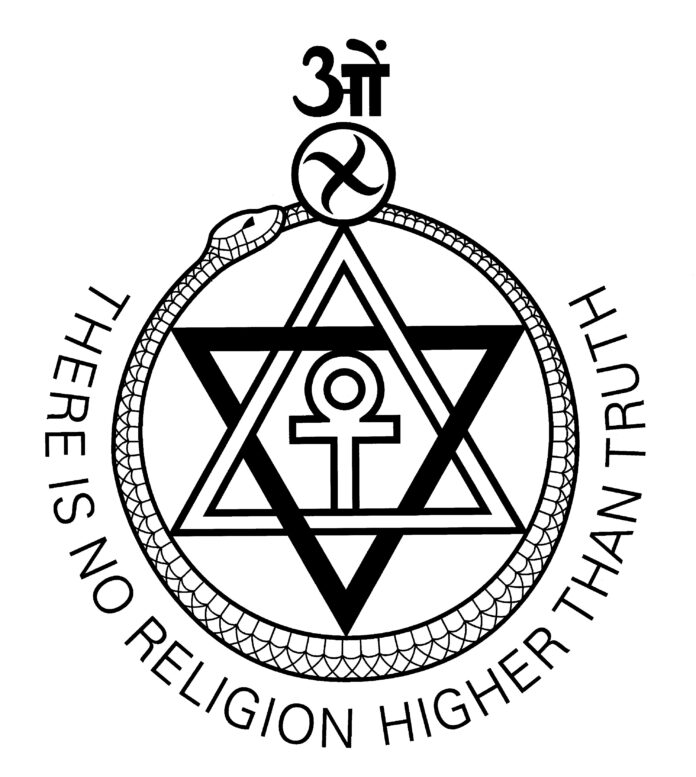The Theosophy, spiritual and philosophical movement and Art
Embracing Elegance: Theosophy, a spiritual and philosophical movement founded in the late 19th century by Helena Blavatsky, Henry Steel Olcott, and others, had a notable influence on modern art. The movement’s emphasis on spirituality, mysticism, and the exploration of deeper truths resonated with many artists of the time, leading to the incorporation of Theosophical concepts and themes into their works. Here’s how Theosophy influenced modern art:
Spiritual Exploration and Symbolism: Theosophy encouraged individuals to seek a deeper understanding of spiritual realities beyond the surface of everyday life. This emphasis on inner exploration and symbolism found its way into the art world. Artists began to use symbols, allegorical imagery, and metaphysical themes in their works to convey profound spiritual concepts and the interconnectedness of all things. Theosophical concepts inspired artists to explore abstraction as a means of representing spiritual realms beyond the physical. The abstract art movement, characterized by non-representational forms and an emphasis on emotion and spirituality, was influenced by Theosophical notions of unseen realities and inner experiences.
Synthesis of Religions and Cultures: Theosophy advocated for the idea that all religions and wisdom traditions shared a common spiritual essence. This concept inspired artists to explore and incorporate diverse cultural and religious motifs into their art. The result was a fusion of Eastern and Western spiritual symbols, creating a unique visual language that transcended traditional boundaries. Theosophy’s embrace of Eastern and Western spiritual traditions as interconnected sources of wisdom resonated with artists seeking to break free from traditional boundaries. This led to the incorporation of Eastern philosophies, symbols, and motifs into Western art, fostering a cross-cultural exchange of ideas.
Abstract and Symbolist Art: Theosophy’s emphasis on the unseen and the mystical resonated with artists exploring abstraction and symbolism. Abstract art, which aimed to convey emotions and spiritual insights through non-representational forms, found common ground with Theosophical ideas. Symbolist artists, too, sought to convey spiritual and philosophical concepts through evocative and often enigmatic imagery.
Wassily Kandinsky and Abstract Expressionism: The Russian painter Wassily Kandinsky is one of the most notable artists influenced by Theosophy. His belief in the spiritual power of art led him to create abstract works that aimed to evoke a higher state of consciousness. Kandinsky’s ideas and artistic approach laid the foundation for the Abstract Expressionist movement, which also explored the relationship between spirituality and art. The Russian painter Wassily Kandinsky was deeply influenced by Theosophy. His belief that art could communicate spiritual truths led him to create abstract works that aimed to evoke emotional and spiritual responses. Kandinsky’s approach laid the groundwork for abstract expressionism, which often conveyed deep inner experiences through non-representational forms.
Symbolism and Allegory: Theosophy encouraged artists to use symbols and allegorical imagery to convey profound spiritual ideas that transcended the material world. Artists began to incorporate esoteric symbols and hidden meanings into their work, inviting viewers to contemplate deeper truths and engage in a form of visual meditation.
Mysticism and Theosophical Imagery: Artists began incorporating mystical and esoteric imagery into their works. Theosophical concepts of astral planes, higher realms, and spiritual evolution inspired a sense of mystery and otherworldliness in their art. This imagery often aimed to convey the idea that there is more to reality than what meets the eye. Theosophy’s focus on mysticism and direct spiritual experience resonated with artists seeking to delve into the mysteries of existence. This led to the creation of artworks that aimed to capture the mystical and transcendent aspects of reality, often using rich and symbolic imagery.
Exploration of Inner Realities: Theosophy encouraged individuals to look beyond the material world and explore their inner selves. This introspective aspect of Theosophy influenced artists to create works that depicted inner psychological and spiritual states, reflecting the inner journey of the soul.
Inner Journeys and Self-Discovery: Theosophical teachings encouraged individuals to explore their inner selves and embark on a journey of self-discovery. Artists translated these ideas into visual narratives that depicted inner struggles, personal transformations, and the quest for enlightenment.
Alternative Perspectives on Reality: Theosophy challenged conventional perceptions of reality, suggesting that there were unseen dimensions beyond the material world. This idea encouraged artists to experiment with new visual languages that went beyond traditional representation, fostering innovation and creativity.
The Influence of Theosophical Writings: Helena Blavatsky’s writings, including “The Secret Doctrine” and “The Voice of the Silence,” had a direct impact on artists seeking spiritual inspiration. These texts presented complex cosmologies, spiritual hierarchies, and theories of evolution that artists incorporated into their visual narratives.
Spiritual Evolution and Cosmic Hierarchies: Theosophy’s theories of spiritual evolution and cosmic hierarchies found their way into art, inspiring depictions of divine beings, stages of spiritual growth, and the interconnectedness of all life. Artists sought to capture the grandeur and complexity of these metaphysical concepts.
Theosophy’s emphasis on spirituality, symbolism, and the exploration of inner realms profoundly influenced modern art. Artists found in Theosophical concepts a source of inspiration that allowed them to transcend the confines of the visible world and create works that tapped into deeper spiritual truths. This influence can be seen in the symbolism, abstraction, and spiritual themes that characterize much of modern art from the late 19th to the early 20th centuries.




